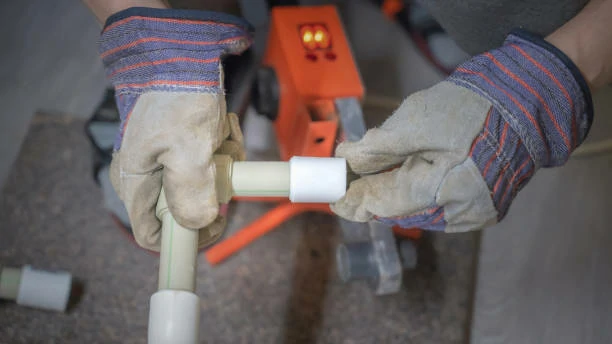Introduction to PPH Pipe Fittings
PPH pipe fittings are essential components in many industrial systems. Made from Polypropylene Homopolymer (PPH), they offer superior chemical resistance and durability. PPH fittings are ideal for systems that handle corrosive fluids or high temperatures. They ensure a leak-free connection between pipes, safeguarding the integrity of the entire system. Many industries, including chemical processing and water treatment, rely on PPH fittings for their robust performance.
Key Features of PPH Pipe Fittings
PPH pipe fittings possess several key features that make them highly effective. They offer excellent resistance to acids, alkalis, and other aggressive chemicals. Additionally, PPH fittings can withstand high temperatures, often up to 100°C, without losing their structural integrity. They are lightweight, which simplifies installation and reduces the overall load on the piping system. Moreover, PPH fittings have a low coefficient of friction, ensuring smooth fluid flow and reducing pressure loss.
Benefits of Using PPH Pipe Fittings
Using PPH pipe fittings brings numerous benefits. For one, they have a long lifespan due to their resistance to corrosion and scaling. This means less frequent replacements and lower maintenance costs. Furthermore, PPH fittings maintain their strength and shape even under harsh conditions. This reliability reduces the risk of leaks or system failures. Their versatility also allows them to be used in various applications, from chemical processing to potable water systems.
Applications of PPH Pipe Fittings
PPH pipe fittings find use in a wide range of applications. In the chemical industry, they transport corrosive substances safely. For example, they are ideal for handling acids in chemical plants. In water treatment facilities, PPH fittings ensure the safe and efficient movement of treated water. They are also used in food processing, where cleanliness and chemical resistance are crucial. Additionally, PPH fittings serve in systems that require high-temperature resistance, such as industrial heating applications.
Installation Tips for PPH Pipe Fittings
Proper installation of PPH pipe fittings is crucial for system performance. Start by cleaning the pipes and fittings to remove any debris. Ensure that the pipe ends are cut squarely for a snug fit. Use appropriate adhesive or welding techniques, depending on the fitting type. Apply consistent pressure when joining the pipes and fittings to ensure a strong bond. After installation, allow adequate curing time before pressurizing the system. This ensures the fittings are secure and leak-free.
Common Mistakes to Avoid During Installation
During installation, avoiding common mistakes can save time and money. One mistake is not aligning the pipes and fittings correctly. Misalignment can lead to leaks or stress on the joints. Another mistake is using incompatible adhesives or tools, which can weaken the bond between the pipes and fittings. Additionally, rushing the installation process can lead to improper curing, resulting in weak connections. Always follow manufacturer guidelines and take your time to ensure a successful installation.
Comparing PPH with Other Pipe Fitting Materials
PPH pipe fittings have distinct advantages over other materials. Unlike metal fittings, PPH does not corrode, making it ideal for corrosive environments. Compared to PVC, PPH offers better temperature resistance, making it suitable for high-temperature applications. While PPH fittings may cost more upfront than PVC, their durability and low maintenance costs make them a cost-effective choice over time. This makes PPH fittings a preferred option in many industrial applications.
Conclusion and Final Thoughts
In conclusion, PPH pipe fittings offer a reliable and durable solution for various industrial applications. Their resistance to chemicals and high temperatures makes them suitable for demanding environments. Proper installation is essential to ensure the longevity and efficiency of the system. By understanding the key features and following the installation tips, you can maximize the benefits of PPH pipe fittings. Whether you are upgrading an existing system or building a new one, consider PPH fittings for a robust and long-lasting solution.
Подключайтесь
ИФАН является китайским производителем пластиковых труб, фитингов и клапанов с 30-летним опытом работы. Если вы заинтересованы в ИФАН медные фитинги, медные клапаны, пластиковые трубы и фитинги, пожалуйста, свяжитесь с нами. ИФАН предлагает вам разнообразные стандартные трубы для удовлетворения ваших конкретных потребностей. Нажмите ниже, чтобы узнать больше о широком ассортименте доступной и экономичной арматуры и сопутствующих товаров для трубопроводных систем от IFAN.
Мы ответим на ваше письмо или факс в течение 24 часов.
Вы можете позвонить нам в любое время, если у вас возникнут вопросы по нашей продукции.
Для получения дополнительной информации, пожалуйста, посетите наш веб-сайт https://ifanpro.com/
Отправить по почте: [email protected]
Whatsapp: + 86 19857948982














Последние комментарии